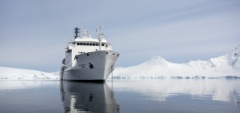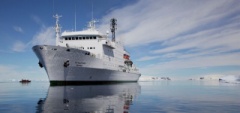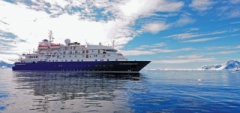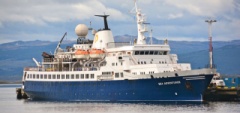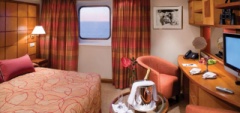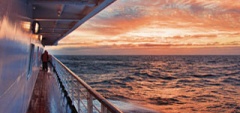The Falkland Islands
A fascinating and picturesque archipelago brimming with seabirds and wildlife...
Located 296 miles east of southern Argentina, the Falklands are comprised of over 700 islands and are famed for their rare mix of wildlife, brought by the cold, nutrient rich waters of the Falkland Current, which flow north past the islands.
The Falklands are most famous for their enormous population of seabirds, which feed at sea and come to the Falklands’ white sandy beaches, tussac covered fields, and rocky cliff tops to nest. The millions of petrels, prions, albatrosses, gulls, geese, ducks and cormorants, which inhabit the islands, dwarf the islands’ meager human population of 4000.
Steeple Jason Island, for example, is home to the largest colony of black-browed albatrosses in the world, New Island hosts the largest breeding colony of thin-billed prions on earth and the cat and rat free, Carcass Island, provides a protected environment for small bird species including the endemic Cobb’s Wren. As if this wasn’t enough, the islands offer the chance to spot five different types of penguins including gentoo, king, macaroni, Magellanic and rockhopper penguins.
The waters around the Falklands are equally as fascinating. Home to a variety of marine mammals; playful purple-finned Commerson’s dolphins frolic in the harbor of West Point Island while Killer whales regularly patrol the shores of Sea Lion Island. Huge blubbery southern elephant seals line the beaches of Sea Lion Island, which they use as a breeding site, while stocky South American fur seals line the rocky shorelines of the western islands.
Although there is evidence to say that the first visitors to the Falkland Islands were Yahgan Indians from Tierra del Fuego, the islands were officially ‘discovered’ by European settlers in the 1500s. The first permanent colony wasn’t established until 1764 by the French, in East Falkland and in 1765, by the British, in West Falkland.
The Spanish then took over from the French in 1767; later abandoning the islands and leading the way for Argentina to assert its claim to the islands as Spain’s successor. Since then the Falklands have remained the subject of a long sovereignty dispute between Britain and Argentina which culminated in the 1892 War in which hundreds of soldiers died.
Once having been an important outpost for the sealing and whaling industries, today the Falklands’ main sources of income come from fishing, tourism and agriculture. A governor appointed by the UK Foreign & Commonwealth Office administers the islands; meanwhile the eight-member elected Legislative Council takes care of most internal matters affecting the islands.
Most of the longer cruises to Antarctica will take in the Falkland Islands, either departing from Punta Arenas in Chile or Ushuaia or Puerto Madryn in Argentina.




